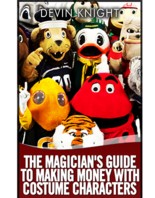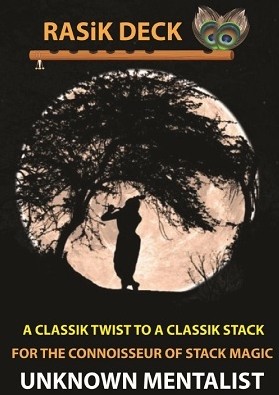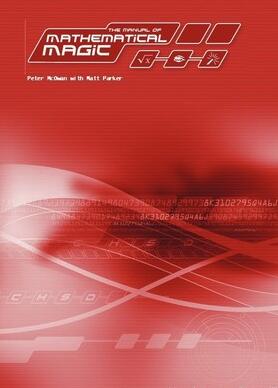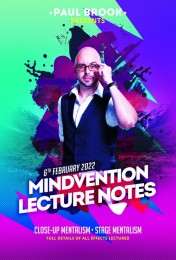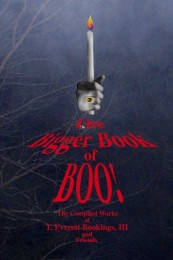My Account
This product was successfully added to cart!
Andrew Mayne – Tricky Thinking
 Shipping: International shipping available
Shipping: International shipping available Shipping time: Instand download
Shipping time: Instand download Discount: Purchase more than $20 and get automatically 20% discount on checkout (more than $4.99 for 10%, $15 for 15% discount on checkout)
Discount: Purchase more than $20 and get automatically 20% discount on checkout (more than $4.99 for 10%, $15 for 15% discount on checkout) Handling time: Send within 1 business days after receiving cleared payment
Handling time: Send within 1 business days after receiving cleared payment Returns: 7 days money back guaratee
Returns: 7 days money back guaratee
Product Detail
IMPORTANT! READ THIS FIRST
Shipping Guide
Sending Time
Product Tags
produced thousands of ideas using the method described here. While writing this guide and listing the steps, my brain came up with several ideas along the way (without trying!). I’ve listed them here to show you how these steps work to create ideas. I’m sure you’ll have your own ideas too.
Andrew Mayne
Here are the three most important things that go into being creative: Connections: Making connections between ideas, concepts and objects Context: Looking at something from a different point of view Volume: Making as many connections as you can, and changing the context as far as you can again, and again Make connections, change context, repeat. That’s the simple formula for being creative. The following steps show you how to apply it in more detail to creating magic effects.
Step 1: State your problem! Why are you trying to be creative? What problem are you trying to solve? Do you need a new trick? A new method? A new presentation? A new pair of under shorts? The first step is to know what you’re looking for. Sometimes this can be an answer to a specific question. Other times it can be just for something new. Are you looking to create a new closeup trick? Parlor trick? Stage trick?
Step 2: List what you want to use to solve your problem How much do you want to spend? How much time to you want to put towards the idea? How much effort do you want to put in? The second step tells you how far you’re willing to go to solve your problem. It creates a group of items and criteria that your solution will come from. Put together a list of a bunch of different objects that could be a possible part of your solution. Here are some to get your brains thinking: Balloons of various shapes and colors, string, keys, harmonica, jumbo coin, comb, action figure, money, wallet, paperclips, knife, candy bar, compact disc, matches, soda can, envelope, plastic egg, coffee mug, rock, magic markers, pencil, crayon, paper, rubber bands, business cards and anything else you can imagine! Note: I try not to use unfamiliar or odd objects (unless they’re part of the method). You might have a great trick with a number 453PX span joint from an old velociter, but to your audience it will just look like junk.
Step 3: Study the properties of each object
Is it heavy or light? Is it solid? What’s it supposed to do? How much can it be changed and still function? What does it remind you of? The third step gets you thinking about the different possibilities of each object. If you have a rock you’ll notice that it looks heavy as well as being heavy. The magic markers can still function if they’re hollow. The crayons look like two pieces of wax sticking out from a tube of paper. The handle on the coffee mug is firmly attached. You might look at the CD and realize that it contains music information in a way that’s invisible to the naked eye. Is the fact that the music on the CD is invisible a premise for a trick? What if you “read” the CDs behind your back?*
*CD TRICK
Take five envelopes and secretly mark them with a dot of superglue in five special spots. Show five different CDs to your audience and slide them into the (marked) envelopes. Have a spectator mix them up and hand them to you behind your back. Find the mark on the envelope then rip it open and pretend to read the CD with your fingers. Continue with the rest of the CDs. Let your spectators examine the CDs all they want – there’s nothing to see!
Step 4: Think of the social properties of each object Who uses these objects? Where do you find them? What’s so special about them? What are some conflicts with these objects? The fourth step can give you ideas for a storyline or the beginning of a premise for an effect. The fact that a harmonica is used for music can set you down one path. The fact that it’s often a cliché in prison movies can set you down another path. All of these paths can lead you to places where new ideas occur. Here are some different milieus to use to think about the objects: movies, television, music, commercial enterprise, mythology, urban legends, novels, childhood, cartoons, etc.
Step 5: Don’t be afraid to jump tracks!
Maybe
thinking about the objects in different contexts got you thinking about something unrelated to your objects. That’s okay. Go with it. Most ideas usually happen like this. The objects are there to help start making connections. The fifth step can happen at any point. The whole idea behind this process is to jump start your thinking. You could have an idea at any moment. If you do, run with it! Just keep playing “what if” until something grabs you. The harmonica got me thinking about prison (and that bad experience I had in Turkey) and the cliché with wives baking keys into cakes. What about an inmate with a sweet tooth that changes keys into cupcakes? What about vanishing a spectator’s key and finding it in a cupcake? What if I go eat a cupcake right now???* Put any interesting ideas down on paper so you’ll have it later in case it works with something else.
*The Magic Cupcake Make a cupcake out of sponge material. Use specialty fabric glue for the “icing”. Secretly palm the cupcake. Ask a spectator to borrow a key. Explain how prisoners at a weight loss camp hide food in keys. Produce the cupcake.
Step 6: Imagine a new purpose for each object Sometimes an object can have multiple uses.
Could you hide something in the object? What’s the difference between two objects? How can one object affect another object? Can you simulate an object with different material? Are some of these objects potential gimmicks? What else could you use that marker for? Can the coffee mug work as some kind of gimmick? Can you take advantage of the fact that people assume compact discs are flat? How could you use a secret piece of string?*
*The Invisible Kung Fu Chop
Tie a piece of string into a loop. Put it in the middle of a handkerchief. Show the audience a bread stick. Have them inspect it. Place the breadstick under the handkerchief (secretly loop the string over the breadstick). Have two spectators hold on to either end of the breadstick under the cloth (guide their hands). Place your right hand under the cloth and thread your fingers through the loop. Have a spectator place their other hand underneath your right hand (touching it). Hold your left hand over the top of the cloth and the breadstick. Have the other spectator put their hand on top of your left hand. With your hands several inches away, gesture at the breadstick and snap it (by pulling on the loop). Catch the string as it falls and pocket it with the handkerchief.
Step 7: Combine aspects of different objects How could the property of one object apply to another?
Would it be magical if one object had the properties of another object? Does the object have transitional properties? Could you take the fact that balloons inflate and apply it to the rock? What if you inflated a rock like a balloon?*
*The Balloon Rock Show your hands empty and reach into your pocket. Pull out a balloon painted like a rock (secretly grab a rock from your pocket).
Step 8: Consider how different objects apply to existing magic effects
Cup your hands around the balloon (and rock) and blow into them like you’re inflating the balloon. Palm off the balloon and show the audience the rock. Let it fall to the table with a clunk!
Can you take an existing trick and make it new by using one of these objects? How many different classic effects can you do with each object? Do any of these objects have the potential for creating a cool new presentation for an older effect? Step eight is where we combine your creativity with the creativity of other ideas. You’ll be amazed by all the strange combinations. Most new magic is just older effects in new clothing. Some people would argue that all new magic is like that. That may be the case, but the difference is that not all new effects came about as a way to update an older effect. Sometimes they just happen to share a similar premise. Go through a magic book and think of how different objects or storylines could be applied to each effect. What about a Matrix using compact discs? How about a Miser’s Dream using keys? Could a coffee mug be used as a Lotta Bowl?
Step 9: Repeat! Start from the beginning, but go in a different direction.
Or take some existing props and ideas and start at any point along the way. What happens if you get a whole different set of objects and start over? What if you pick one object and take it through each step? How many different ideas can you come up with a card box and each of the ideas? Each new idea will follow its own path. A creativity map takes you to a new place each time!
Idea boosters
Start coming up with ideas with a partner. You’ll find that they can take you into totally new directions.
Listen to music, watch movies and look for ideas everywhere. Keep lots of notebooks!
Clip articles or ideas that feed your imagination.
Go take a walk through a dollar store for ideas. Give yourself creative challenges. How many tricks can you invent in an hour with a paperclip?
That about sums up the quick approach.
There’s no one perfect way to approach creative thinking. However, I hope this way has given you some ideas. As you can see from the included effects, just writing the steps down got me thinking! Best, Andrew Mayne
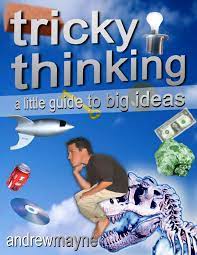
PLEASE NOTE: This item is a downloadable Video or Ebooks . Gimmick not included.
Once your order information has been verified, we will send URL links direct to your email address. They will appear as hyperlinks. You simply click on each link one by one, and accept the download on to your hard drive. Downloading time will depend on a variety of factors, such as your local bandwidth, etc.
The following is the process you should take to complete your order through bank to bank transfer:
1. Please go to your bank (through online banking, ATM or going into a branch) and complete the transfer of money. Make sure that the amount you transfer is the exact total of your order. Payment details below:
- If your bank is located in Austria, Germany, Spain, France, United Kingdom, Italy, Netherlands, Belgium, Finland, Greece or Luxemburg you will pay to our WorldPay bank. You will see the bank details once you have placed the order.
PLEASE NOTE: If you are paying to our WorldPay bank you MUST include the Unique Payment Reference Number (you will receive this directly after paying the order) in the description section when completing payment to help us identify your order. Failure to do this will result in an unsuccessful transaction.
- If your bank is located in a country not listed above you will pay to our HSBC account. The details are below:
Bank Account:
Bank Code:
Beneficiary:
Bank Name:
Bank Address:
SWIFT Code:
PLEASE NOTE: If you are paying in this way you MUST write your Yourname order number in the description section when paying so we can easily recognize your payment. Failure to do this will result in a delayed or failed transaction.
2. When this is done, log in to your Yourname ‘My Account’ and complete the following:
Click ‘Order list’
Click ‘Pay’
Click ‘Complete Payment’ and fill in the related information for verification (This is an important step. If the information you have filled in does not match your bank details the payment can not be completed.)
Click ‘Submit’ to finish the procedure.
3. You will receive a payment confirmation email from us after your order’s payment has gone through successfully. If you do not receive this email, please contact us here: http://www.dlmagicstore.com/help/
Please note that dlmagicstore will begin to handle your items after payment has been cleared.
All magic ebooks and videos are send via email .If the file already been upload ,we can send immediately . If not , we need 2 or 3 days to upload the file .

